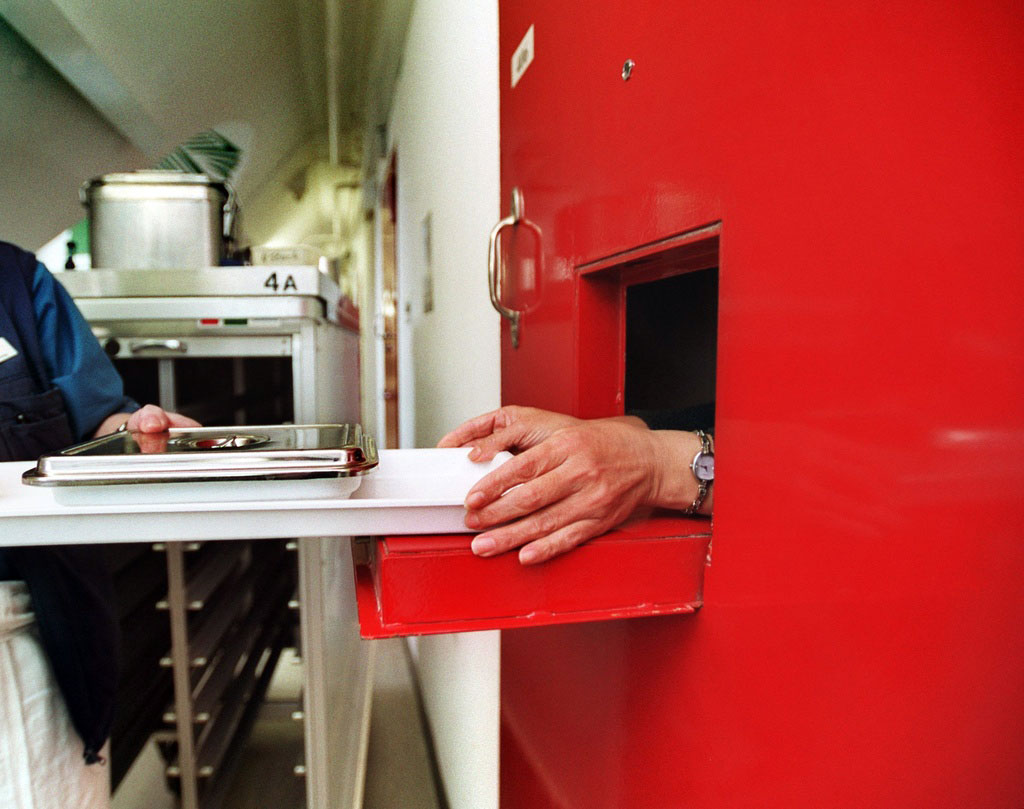
Experts reflect on spike in prison population

The recent rise in prisoner figures has cast light on the impact of penal reforms and regional variations in detention policy.
The number of inmates in Swiss prisons grew by five per cent last year to 6,084 – the second-highest level in a decade. This rise is particularly evident in French and Italian-speaking regions.
The overall growth has caused mixed reactions among observers.
“It’s a startling increase,” said Daniel Laubscher from the Federal Statistics Office, which published the figures last week.
The crime and penal law expert had rather expected a drop in prisoners following reforms to Swiss criminal law, which entered into force in 2007.
These controversial changes included abolishing jail terms of less than six months and introducing a system of so called day-fines calculated on a person’s income. It also introduced communal work as a sanction for offenders.
The rise in inmates is also set against four years of successive falls in the overall number of reported crimes.
“Upwards trend”
But Martin Killias, a professor of criminology at Zurich University, said he was not surprised by the increase.
“It seems paradoxical, but the unsurprising, sad reality is that these reforms are likely to produce more prisoners than fewer,” he told swissinfo.ch.
“When judges cannot use short sentences they usually impose alternative sanctions, like day fines, but they may also feel such an approach is inappropriate for the crime and impose a heavier custodial sentence of just over six months.”
Swiss politicians are not eager to learn from the mistakes made by other countries, said Killias, pointing to Portugal, Spain, Greece and Cyprus, where similar penal reforms have led to an “explosion” in prisoner numbers.
“This upwards trend is likely to be with us in Switzerland for the next few years,” he added.
Another emerging concern is that over the next five years there will be an increasing use of day fines without suspended sentences, he said. This will lead to a serious problem as more people are sent to prison for not being able to pay their fines, as in Germany and Austria.
“This is not yet happening, but will increase dramatically over the next few years,” said the criminology professor.
Regional differences
The growth in the number of people serving prison sentences in Switzerland is particularly striking in French- and Italian-speaking regions.
According to the Federal Statistics Office, the number of detainees in this category rose by 20 per cent over the past decade from 746 to 1,115 in this part of the country, while the figures for central and eastern Switzerland dropped slightly.
“This underlines the bad trend among French-Swiss and Italian-Swiss justice systems to much more willingly lock people away,” said Nicolas Quéloz, professor of penal law and criminology at Fribourg University.
Federal statistics also show that cantons Fribourg, Geneva, Jura, Neuchâtel, Vaud, Valais and Ticino also resort more readily to pre-trial detention.
This is partly due to the “more repressive culture” of judges from those regions, said Quéloz, but also because the percentage of foreign suspects is much higher than in other Swiss regions.
Foreign flight risks
Overall, almost three out of four detainees nationwide are foreign. But this is not because foreigners commit more crimes but rather because they are seen as “flight risks” by authorities, according to a 2006 study by Bern University.
In the above-mentioned cantons, around 87 per cent of people in pre-trial detention are foreign, compared with 73 per cent in eastern regions and 74 per cent in central and north-west Switzerland.
“Cross-border crime is much more of a western-Swiss phenomenon than in eastern regions,” said Killias. “Suspects living abroad all end up in pre-trial detention; otherwise they would never come to a hearing.”
According to the Statistics Office, prisons in French- and Italian-speaking parts are 100 per cent full, while the overall occupancy rate of Swiss prisons stands at 90 per cent.
Despite this general upward trend, Quéloz said it was important to put all these statistics into perspective.
“The Swiss prison population is 80 detainees for every 100,000 residents. When you compare this with Austria (110), France (100), Germany (95), Italy (80), Russia (630), Poland (235), the Netherlands (113), Switzerland shouldn’t be too worried,” he said.
Simon Bradley, swissinfo.ch
There are 114 detention centres in Switzerland with places for 6,683 inmates.
In 2009 there was a total of 6,084 people under lock and key (+5% compared with 2008), the second highest level in a decade. Women accounted for 6% of the prison population, and teenagers 1%.
On the office’s reference day – September 2 – 1,888 people were being held in detention. A further 3,603 were serving time, while 411 were waiting to be expelled from the country. The 182 others were being held for a variety of reasons.
Foreigners represented 70% of those in detention.
Switzerland’s most overcrowded prison, Champ-Dollon jail in Geneva, was built in 1977 to hold 270 prisoners but today averages nearly twice as many. In mid-January 2009 there were 502 detainees. Around 60% of people held there are in investigative custody.

In compliance with the JTI standards
More: SWI swissinfo.ch certified by the Journalism Trust Initiative































You can find an overview of ongoing debates with our journalists here . Please join us!
If you want to start a conversation about a topic raised in this article or want to report factual errors, email us at english@swissinfo.ch.